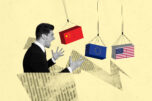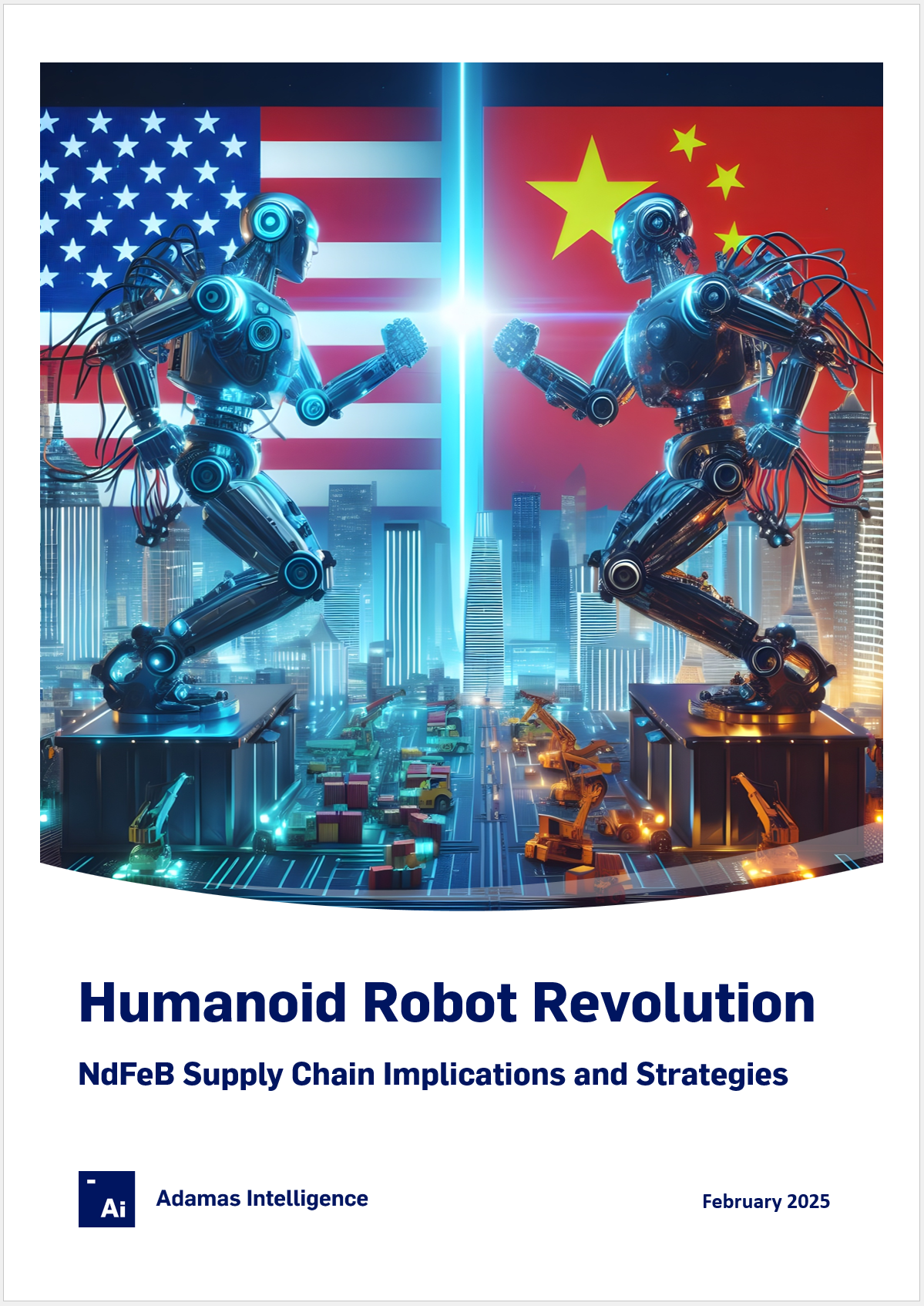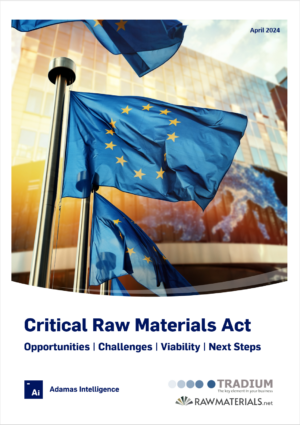Impacts and implications of China’s latest rare earth export restrictions
The incoming restrictions are a massive pressure tactic designed to strengthen Beijing's hand in advance of the upcoming Xi - Trump meeting in weeks. Unlike the sudden imposition of earlier export controls in April, the foreshadowing of these stricter, wider reaching measures was unquestionably by design. As described, the incoming restrictions will be nearly all encompassing, affecting a wider range of rare earth materials, whether sourced from China or not, along with parts, assemblies and components containing them. If fully implemented come December 1st, China’s latest crank on the rare earth ratchet will make existing export controls look like a minor inconvenience. Existing supply chain woes, bottlenecks and assembly line disruptions would be amplified manifold. The export restrictions introduced by China in April of this year galvanized the resolve of governments and end users to support the expedited development of alternative supply chains. The bolstering of these restrictions from today adds a nickel finish.

Another crank on the rare earth ratchet
On October 9th, China’s Ministry of Commerce (MOFCOM) announced the implementation of additional export control measures related to rare earths and associated technologies.
As with earlier restrictions imposed in April of this year, the latest export controls have been issued on the basis of national security and interests.
The updated restrictions entail a number of notable measures:
First: The latest controls target technologies for rare earth mining, separation, metal production, magnet manufacturing and recycling.
Effective immediately, exports of the following are prohibited without a MOFCOM license:
- Technologies and carriers (e.g., design drawings, process parameters) for rare earth mining, separation, metal production, magnetic material manufacturing and rare earth recycling.
- Technologies for production line assembly, debugging, maintenance, repair and upgrading in these areas.
Even non-controlled goods/services require a license if the exporter knows they will aid overseas activities in these sectors.
“Export” broadly includes transfers abroad or provisions to foreign entities via trade, IP licensing, investment, exchanges, gifts, exhibitions, R&D, consulting or employment.
In addition to the above technologies, MOFCOM will also implement export controls on a multitude of equipment that could be used in rare earth mining, separation, metal making, and other parts of the value chain, as well as raw materials, from mineral concentrates to extractants used in rare earth production.
Second: The updated measures increase the number of restricted rare earth elements from 7 to 12.
Effective November 8th, exports of the following rare earths are prohibited without a MOFCOM license (in addition to those already restricted):
Holmium-Related Items:
- Holmium metal, alloys (e.g., Ho-Cu, Mg-Ho, Ho-Fe), targets (e.g., Ho, Ho-Cu), permanent magnets, crystals, magnetic refrigeration, and magnetostrictive materials
- Holmium oxide and mixtures
- Holmium compounds and mixtures
Erbium-Related Items:
- Erbium metal, alloys (e.g., Er-Al), targets (e.g., Er), crystals, optical fibers, hydrogen storage, and ceramics
- Erbium oxide and mixtures
- Erbium compounds and mixtures
Thulium-Related Items:
- Thulium metal, targets (e.g., Tm), crystals, and luminescent materials
- Thulium oxide and mixtures
- Thulium compounds and mixtures
Europium-Related Items:
- Europium metal, alloys (e.g., Mg-Eu), targets (e.g., Eu), luminescent materials (e.g., fluorescent powder), crystals, and hydrogen absorption materials
- Europium oxide and mixtures
- Europium compounds and mixtures
Ytterbium-Related Items:
- Ytterbium metal, targets (e.g., Yb), crystals, optical fibers, and thermal barrier coatings
- Ytterbium oxide and mixtures
- Ytterbium compounds and mixtures
As with the earlier restricted rare earth materials, exporters of the above-listed materials must first apply for an export license from the State Council commerce department as per the process described in this Adamas whitepaper.
Third: The updated measures mandate that overseas organizations that use China-sourced rare earths to produce products or materials first obtain an export license before selling those products or materials abroad in some cases.
Effective December 1st, if the magnetic material or target material listed below was manufactured from China-sourced samarium, dysprosium, gadolinium, terbium, lutetium, scandium or yttrium and those materials make up more than 0.1% of the value of the product, an export license will be required.
Rare Earth Permanent Magnet Materials:
- Samarium-Cobalt Permanent Magnet Materials
- Neodymium-Iron-Boron Permanent Magnet Materials containing Terbium
- Neodymium-Iron-Boron Permanent Magnet Materials containing Dysprosium
- Parts, components, and assemblies containing the above materials
Samarium-containing Target Materials:
- Samarium Target
- Samarium-Cobalt Alloy Target
- Samarium-Iron Alloy Target
Gadolinium-containing Target Materials:
- Gadolinium Target
- Gadolinium-Iron Alloy Target
- Gadolinium-Cobalt Alloy Target
Terbium-containing Target Materials:
- Terbium Target
- Terbium-Cobalt Alloy Target
- Terbium-Dysprosium-Iron Alloy Target
Dysprosium-containing Target Materials:
- Dysprosium Target
- Terbium-Dysprosium-Iron Alloy Target
Lutetium Target
Scandium Target
Yttrium-containing Target Materials:
- Yttrium Target
- Yttrium-Aluminum Alloy Target
- Yttrium-Zirconium Alloy Target
Similarly, if a foreign company wishes to export China-origin samarium, dysprosium, gadolinium, terbium, lutetium, scandium or yttrium metal (or their alloys and oxides) as is, an export license is required.
Moreover, if a company wants to export parts, components and assemblies containing China-origin samarium, dysprosium, gadolinium, terbium, lutetium, scandium or yttrium metal (or their alloys and oxides), an export license is required.
This latter condition related to parts, components and assemblies widens the net to include orders-of-magnitude more products then previous export controls and calls into question the ability of even China to manage so many export license applications.
Mega Flex: China’s MOFCOM also requires an export license for any items produced overseas (e.g., magnets) using technologies originating from China for rare earth mining, separation, metal production, magnetic material manufacturing and rare earth recycling.
Thus, as we interpret the regulations, for a company producing high performance NdFeB magnets outside China (even if using non-China-sourced rare earths), MOFCOM requires they obtain an export license to sell magnets to countries other than China if Chinese technology was used for mining, separation, metal production, or making the magnets in question.
With Chinese technologies and equipment likely used to some degree in all rare earth supply chains globally, this is a mega flex on the global industry.
From Beijing’s perspective, enforcement from afar could prove impossible but offers China a basis and justification from which it could start to “blacklist” foreign supply chain participants as a next step.
Overall: The incoming restrictions are a massive pressure tactic designed to strengthen Beijing’s hand in advance of the upcoming Xi – Trump meeting this month.
Unlike the sudden imposition of earlier export controls in April, the foreshadowing of these stricter, wider reaching measures was unquestionably by design.
As described, the incoming restrictions will be nearly all encompassing, affecting a wider range of rare earth materials, whether sourced from China or not, along with parts, assemblies and components containing them.
If fully implemented come December 1st, China’s latest crank on the rare earth ratchet will make existing export controls look like a minor inconvenience. Existing supply chain woes, bottlenecks and assembly line disruptions would be amplified manifold.
The export restrictions introduced by China in April of this year galvanized the resolve of governments and end users to support the expedited development of alternative supply chains. The bolstering of these restrictions from today adds a nickel finish.






